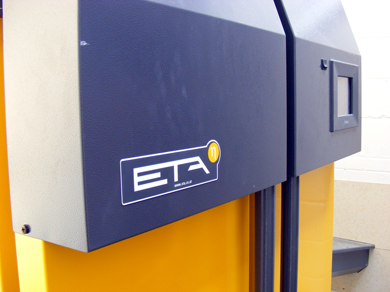Everybody wants to help the environment, but it’s often the case that people don’t believe it’s within their means to do so—or they just don’t know how. Business owners, for example, have a ton of work on their plates without concerning themselves with Mother Nature, but the introduction of biomass boilers to the workplace has many companies saving money while using energy responsibly.
Biomass boilers use wood or other types of organic material to produce energy. Perhaps their most attractive quality is the fact that they’re virtually carbon neutral. It’s possible, then, to develop an energy-production system using biomass that’s entirely sustainable.
To accomplish this would require the replanting of trees used to produce the power. After all, wood chips are the most practical source of biomass available, and if trees are replanted consistently, they would remove the carbon byproducts that come from biomass boilers, establishing a perpetual cycle.
Biomass boilers are especially practical for companies that produce wood chips as byproducts. For example, businesses that perform woodwork or wood production have a ready supply of biomass fuel on hand. By integrating a biomass boiler, not only do they eliminate the need and expense of disposing wood chips, but they also have cheap power for the business.
Today, biomass boilers have advanced to the point that they are practical for a range of businesses, as well as residential homes. These boilers offer several benefits in addition to reducing energy cost:
- A well-maintained boiler will produce little smoke when it operates.
- The price is more consistent and predictable than energy alternatives, such as gas and oil.
- By replacing an electrical heat system with a biomass boiler, business owners can reduce CO2 output by approximately 9.5 tonnes per annum.
The ideal type of biomass heating system may depend on your business. Here are three common designs:
Fully Automated Boilers
These require relatively little effort on the operator’s end. A holding tank contains the biomass, and a conveyor system moves the fuel from the tank to the boiler. The rate of this transfer is automated by a computer system that measures the size of transported loads, as well as the temperature and pressure inside the boiler. They are very easy to operate but may require a slightly higher initial investment.
Semi-Automated Boilers
Semi-automated systems require a bit more manpower than fully automated designs. The holding tanks are similar, and a simple conveyor system runs under the supervision of personnel. Ultimately, this can improve the system’s overall efficiency as it allows more control over the heat. Instead of running at high capacity at all times, operators can adjust the heat level based on seasonal changes.
Pellet-Fired Boilers
Pellet-fired systems involve a form of processed wood. Although this makes the fuel a bit more expensive, it’s very high efficiency and allows companies to develop sustainable, reliable energy systems. Stored in grain-style silos, these chips are very uniform and condensed, allowing gravity to transfer them through the boiler.
Because of their shape, these chips require relatively little room for storage. This may cut down on costs, as well. Pellet-fired boilers are very popular among a range of facilities, but especially those that have special limits or where pellet production is nearby.
Gabriella Johnson is the Marketing Executive at Innasol, a leading European renewable heating company. She and the team are able to provide homeowners and businesses with more information on biomass boilers, so if you want to learn how it could save your business money, contact Innasol at 01621 892613.



